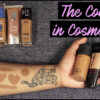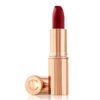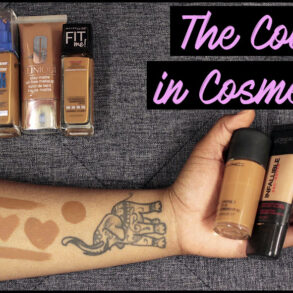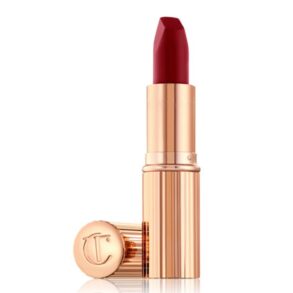In the arcane and often seemingly impenetrable bureaucracy of the U.S. government, few agencies have as broad of a mandate to keep the American people safe as the Food and Drug Administration.
In addition to protecting members of the public from harm when it comes to what they eat and the pharmaceuticals they consume, the agency is also empowered to regulate an eclectic list of products, including microwave ovens, tooth fillings, bedpans and lasers.
But for 85 years, one commonly used class of items has managed to avoid almost any significant changes to the way the FDA regulates it—cosmetics, personal care and beauty products.
Indeed, until the passage of the Modernization of Cosmetics Regulation Act, or MoCRA, in 2022, federal guidelines around the use of chemicals in the production of beauty products had not undergone any meaningful updates in six decades. In fact, the Food and Drug Administration’s relatively limited authority over beauty products is still largely defined by the terms of the Food, Drug, and Cosmetic Act, a law enacted in 1938.
Those guidelines prevented the FDA from taking important public health steps, such as imposing mandatory recalls on harmful beauty products; requiring cosmetics manufacturers to list the flavor and fragrance ingredients in their products; and compelling companies to inform regulators when consumers experience adverse health effects from their products.
MoCRA—the most significant expansion of cosmetic regulations since the 1938 law—goes into effect next month and addresses those issues, which consumer protection groups and others have long said were problematic.
However, even as they welcome the increased authority of the FDA over beauty products, some experts, including researchers and public health advocates, say that MoCRA doesn’t go far enough. Critics of the new law say that it is rife with loopholes that could be exploited by the makers of cosmetics, potentially endangering those who use personal care items.
Despite the new law, federal officials are still prevented from taking such actions as requiring independent testing of beauty products before they are sold, prohibiting the use of so-called “forever chemicals” in cosmetics and detering manufacturers from using such labeling or marketing slogans as “clean,” “safe” or “nontoxic.”
“There was a lot that needed to be done—a lot,” said Janet Nudelman, director of the Campaign for Safe Cosmetics, an advocacy group that advised federal lawmakers as they crafted the new guidelines. “Congress chose to focus on one piece of the problem: bringing cosmetic safety reform into the 21st century—creating a floor for cosmetic safety. But not going all the way in terms of what was needed.”
What was needed, Nudelman said, was a greater emphasis on transparency by cosmetics makers, specifically regarding more disclosures about what goes into their products.
“What did get enacted is very important. But, what consumers care about is whether or not the ingredients in their products are safe,” said Nudelman, who is also the senior director of program and policy at Breast Cancer Prevention Partners, an advocacy organization for cancer patients that has studied links between the disease and toxic substances.
“That’s where the rubber hits the road,” she said. “And that’s what wasn’t dealt with in the new law.”

Nudelman was referring to what many advocates see as a gaping hole in the legislation: the failure to require cosmetics companies to prove their products are safe before they go to market. Under MoCRA, unsafe products can only be recalled once they are already on store shelves.
The new law also does little to change the current guidelines about which chemical substances are safe to use in beauty products—the nations of the European Union have outlawed the use of more than 2,400 chemicals in cosmetics; federal officials in the U.S. have banned only 11 substances from cosmetics.
Those relatively lax regulations, consumer protection advocates say, mean that the health of millions of users of beauty products could be at risk because they may be exposed to harmful cosmetics.
In 2018, Nudelman’s group tested 32 products and found “hidden chemicals linked to cancer, asthma, reproductive toxicity, endocrine disruption and aquatic toxicity”—how chemicals harm organisms that live in water.
“The presence of unlabeled chemicals linked to such a broad array of health concerns should raise a red flag for consumers, given that most of us regularly pour, spray and rub a multitude of fragranced personal care products on our bodies every day,” the group said in a report.
It’s something that keeps Nia Imani Bailey up at night.
Bailey, a radiation therapist who works in oncology for Christina Care Health System in Delaware, said she is well aware of the chemicals that are in beauty products marketed to Black and brown women.
“We know that perms and other products, even nail products and makeup products, have cancerous agents in them,” said Bailey, whose parents never let her perm her hair. “And we also know that cancer cells are rapidly dividing. So when we put those things in our bodies or in our skin and within ourselves, then we are putting those cancerous things inside of us.”

Bailey, 31, the producer of a documentary about young women and breast cancer, said she remains meticulous about the products she uses, having grown up in a small town in South Carolina where nearly every person in her family has had some type of cancer.
“There are so many types of cancers,” she said, “because when we really break down all of the products that are not natural that we are putting in our hair, and body, on our faces, it will turn our DNA.”
Researchers say that those exposures may have an especially pronounced effect on Black women, and that the beauty products that are sold in neighborhoods that are poorer and predominantly made up of people of color typically have higher levels of toxins in them when compared to those marketed in wealthier areas with high numbers of white residents.
The study by researchers at Harvard University’s T.H. Chan School of Public Health’s Department of Environmental Health used the Environmental Working Group’s cosmetics database to examine ingredients in 14,000 shampoos, conditioners and chemical straighteners or relaxers that were sold in 50 stores in eight Boston neighborhoods.
Marissa Chan, a Ph.D. candidate at Harvard University who was the lead author of the study, said such factors as bias, discrimination and social pressure to conform to European beauty standards could play a role in the use of those products by women of color and those with low incomes.
“There is a tendency in the personal care products space to classify product use as solely an individual-level behavior,” Chan said, “when it really is the product of systems as well as product of different ‘isms—racism, colorism, odorism—all these different systems can impact product-use.”
“Across the U.S. but also across time, these differences in terms of exposure are persisting, unfortunately,” Chan said.
FDA scientists have sought to address that disparity, moving last month to ban the use of hair straightening products that contain formaldehyde, a known carcinogen. It was a step that Nudelman said was “a double-edged sword.”
“On the one hand, ‘hooray’—we’re happy that the FDA has finally woken up to this problem that consumers have been aware of and have been negatively impacted by for so many years,” Nudelman said. “But by banning formaldehyde from hair-straightening products, they’re just really only dealing with the tip of the iceberg of the problem.”
The Personal Care Products Council said in a statement to Inside Climate News that the group and its member companies collaborated for more than a decade with “a bipartisan group of congressional leaders and broad array of stakeholders to modernize and enhance the FDA’s regulatory authority over our industry and provide the safety reassurances that consumers expect and deserve.”
“We celebrated the enactment of the bipartisan Modernization of Cosmetics Regulation Act (MoCRA) in December 2022,” said the council, which represents 600 companies that comprise more than 90 percent of the U.S. beauty industry. “This landmark legislation revamped FDA oversight for our sector, giving the FDA enhanced regulatory tools, which are pivotal in ensuring product safety, promoting innovation and bolstering consumer trust.”
The Power of the Personal Care Products Council
In March, following passage of the new cosmetics regulatory act, public health advocates who focus on beauty, health and environmental justice scheduled a formal meeting in Washington with Congressional staffers whose purview includes oversight of the cosmetics industry.
The advocates said it was the first time in five years that they had been able to talk about their agenda around the safety of cosmetics and their desire for additional legislation with those who work on key oversight committees.
When one of the advocates asked a Capitol staffer how often industry lobbyists came to see them, recalled Micaela E. Martinez, an ecologist and director of environmental health for We Act for Environmental Justice, a New York-based group that advocates for environmental issues in low income areas and communities, the staffer replied, “‘Just about whenever they want.’”
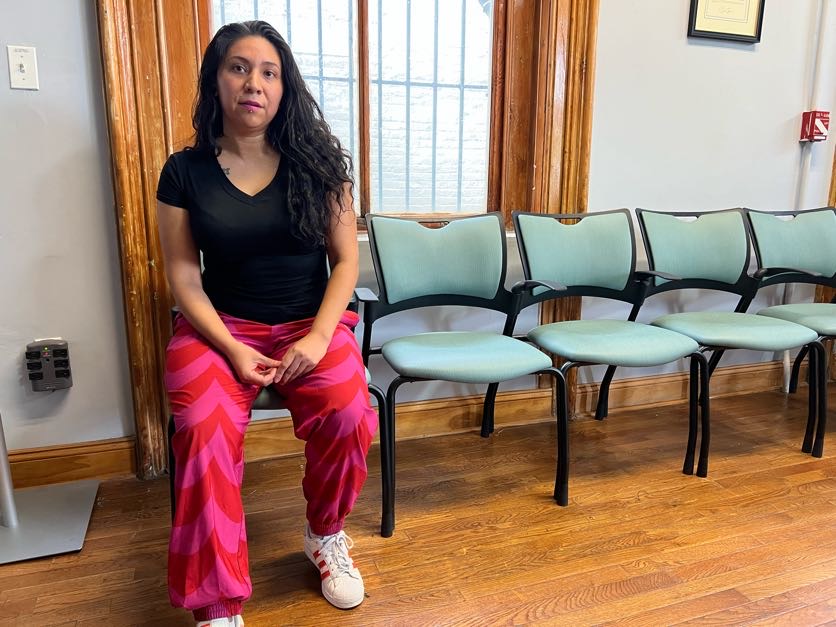
“That staffer said that there were over 200 times that they know of, that the industry was talking to Congress and we had one,” Martinez said. “The industry lobbyists, that’s their whole job, right?”
Nudelman, director of the Campaign for Safe Cosmetics and senior director of program and policy at Breast Cancer Prevention Partners, noted another sign of industry influence: For three and a half decades, a program for breast cancer survivors called Look Good, Feel Better has offered no-cost workshops at hospitals, healthcare centers and other facilities around the country to provide beauty tips, free cosmetic products and complimentary makeovers to women who have sustained hair loss or other changes to their appearance because of their cancer treatments.
The program offers lessons on skin care, the styling of head coverings like wigs and turbans, and the use of other products designed to offset the appearance-related side effects of being treated for the disease. The goal, organizers say, is to help people with cancer “find some normalcy in a life that is by no means normal.”
It is sponsored by the Personal Care Products Council, the lobbying arm of the beauty industry that has spent heavily each year advocating against tougher regulation of cosmetic products that still often contain harmful chemical substances that have been linked to cancers.
What kind of harmful chemicals? Even with expanded regulatory powers thanks to the new law that goes into effect next month, federal officials do not have the authority to require cosmetics companies to conduct independent testing to demonstrate the safety of individual products or ingredients.
“I personally am outraged by this program,” Nudelman said of Look Good, Feel Better. “Because, for one thing, that’s not the first thing that a woman recovering from breast cancer surgery needs to do. And that is slather herself with cosmetic products that could contain chemicals that are linked to an increased risk of breast cancer.”
The Personal Care Product Council did not respond to a request for a comment about its sponsorship of Look Good, Feel Better. But the director of the program, Louanne Roark, noted in a letter posted on the council’s website last month that while breast cancer rates have declined by 43 percent since 1989, breast cancer deaths remain about 40 percent higher for Black women than white women.
“We are privileged to support anyone undergoing cancer treatment, enabling them to rediscover their normal appearance, confidence and self-esteem and to find a supportive community of others going through the same thing,” Roark wrote. “Our goal is to help even more people with cancer and to be there for everyone who needs us.”
“A Very Back-Room Negotiation”
The forces that eventually led to passage last year of the Modernization of Cosmetics Regulation Act—political pressure from lawmakers and advocates, growing consumer demand and a grudging acquiescence from some in the cosmetics industry—began to take root over the last decade or so.
“It was the confluence of all those things,” said Melanie Benesh, the vice president for government affairs at the Environmental Working Group, a public health advocacy group.
Particularly crucial to the effort, Benesh said, was the support of Sen. Susan Collins (R-Maine) and the late Sen. Dianne Feinstein (D-Calif.), who across multiple sessions of Congress introduced a series of measures designed to bring more regulation to personal care products.
The breakthrough came when Sen. Patty Murray (D-Wash.), a co-chair of the Senate’s Health, Education, Labor and Pensions Committee, succeeded in inserting the act into the Omnibus Appropriations Act passed on Dec. 29, 2022.
After a decade in which the public has seen revelations about asbestos in baby powder, carcinogens in dry shampoos and toxins in hair and skin products, the effect of consumer demand should not be underestimated, Benesh said.
“Consumers want to know more and more about what’s in their products,” Benesh said. “Consumers want to know more about what they’re putting on their skin. There has been this growing consumer movement that’s only gotten louder every year.”
Keep Environmental Journalism Alive
ICN provides award-winning climate coverage free of charge and advertising. We rely on donations from readers like you to keep going.
The drafting of MoCRA featured more than its share of bumps, said Nudelman, whose group advised lawmakers who crafted the legislation.
As the final version of the bill emerged, she said, the discussions and lobbying grew increasingly opaque, she said, adding: “At the very end of the process, it was a very back-room negotiation.”
One provision that apparently emerged from those discussions involved restricting the ability of states to ban harmful chemicals in cosmetics. That is particularly concerning to advocates because legislatures in California and a handful of other states have been more nimble at enacting laws than Congress. Some of their consumer protection guidelines have served as templates for federal legislation.
“The Personal Care Products Council basically negotiated these broad-based bans on state cosmetic legislative activity in exchange for their support” of MoCRA, said Nudelman. And even as advocates prepare for MoCRA to take effect next month, some have already started working to close its loopholes, working to support a package of bills introduced earlier this year by Rep. Janice D. Schakowsky (D-Ill.) that would ban formaldehyde, parabens and phthalates, and increase transparency around chemical ingredients—two areas in which advocates say MoCRA fell short.
“I’ve always been an advocate for consumer protection, and one of the areas where there is the least protection actually is when it comes to cosmetics,” Schakowsky said in an interview with Inside Climate News. “This is a threat to consumers that has not really been addressed.”
Victoria St. Martin reported this article while participating in the USC Annenberg Center for Health Journalism’s 2023 National Fellowship.

